Southern
Ethiopia
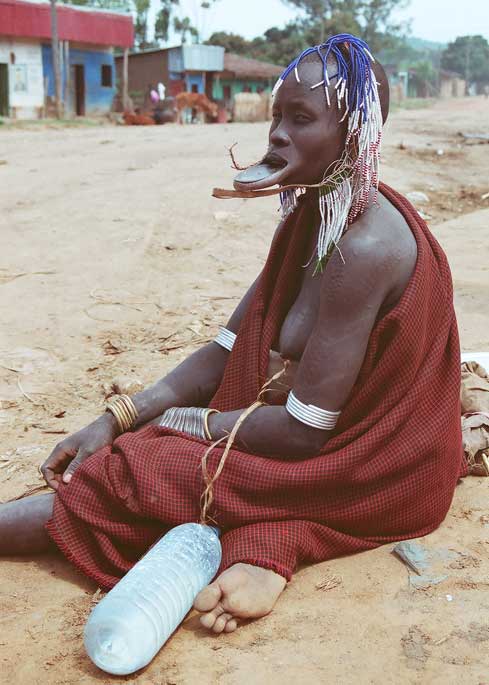
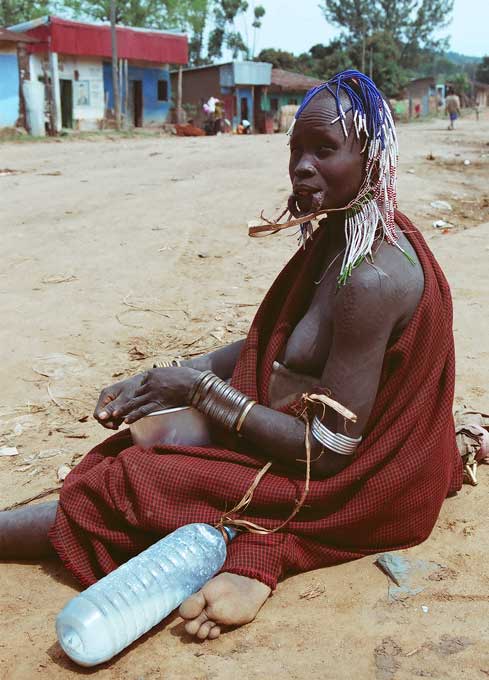
Mursi tribal woman, with and then without the wooden lip plate that
make them infamous. When the girl turns 15, she gets slit below
the lower lip and progressive distending of the lip by inserting
increasingly wider lip plates continues until final size is
attained. Ethnologists disagree on why the Mursi do this.
Beauty is one of the theories but I find it difficult to subscribe to
that one!
Southwestern Ethiopia is home to the tribes of the Lower Omo Valley, a
once isolated and uncivilized region that was barely even aware of the
existence of the rest of Ethiopia until the 1970s. Freaky outfits and
customs and traditions of the Omo peoples suddenly propelled them from
the stone age into becoming a modern day human zoo for tourists.
Tourists are still relatively rare due to the difficulty in getting
there, but the region as a whole is so cripplingly poor (even within
Africa) that the faintest scent of tourist money has already
transformed the most accessible villages into spoiled money gouging
operations. Mursi ask 2 birr (about US$0.20) for every photo you
take of them, and it seems that much of the money is then used for the
lead man to buy alcohol and sometimes medicine (malaria is a terrible
scourge in the marshy tsetse fly and mosquito infested regions where
their villages are located).
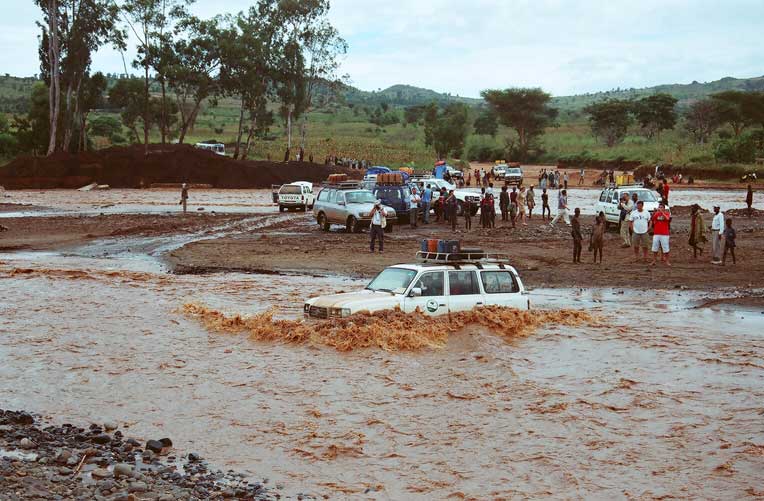
Just to give you an idea of how remote and difficult it is to get to
the Omo valley overland, here's a Landcruiser fording a stream going
the "easy" route during the dry season. There are now commercial
flights to the Omo capital of Jinka, but before then the whole province
was completely cut off from the rest of the world during the twice a
year rainy seasons.
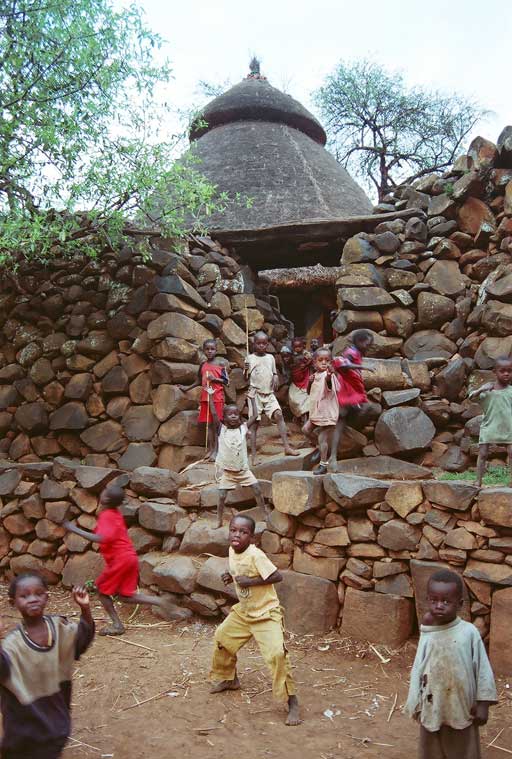
These are the playful children of the unspoiled village of Dara, within
walking distance of Karat-Konso town. Konso villagers may not look as
wild as Mursi or Hamer tribesmen so they get less attention from
tourists, and the villages remain more authentic and friendly.
Visitors pay the local tourist authority in Karat-Konso a flat fee for
a permit to visit the villages and this money gets disbursed directly
to the village elders, so as to discourage begging from villagers.
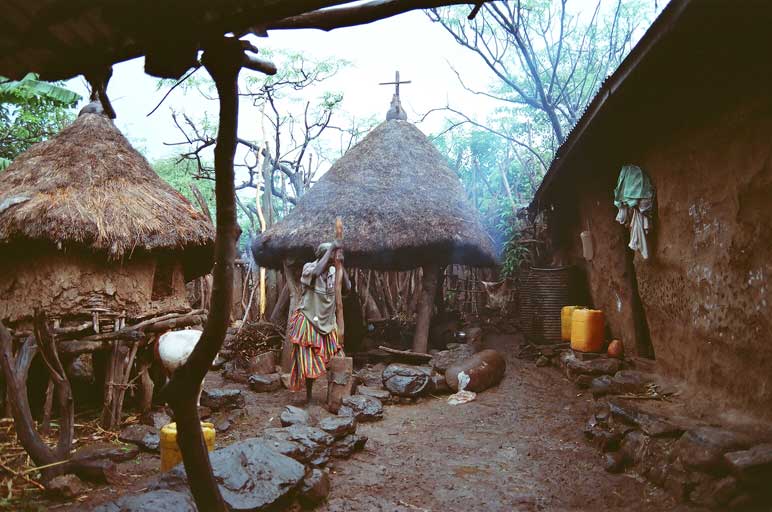
Grinding millet in Dara village
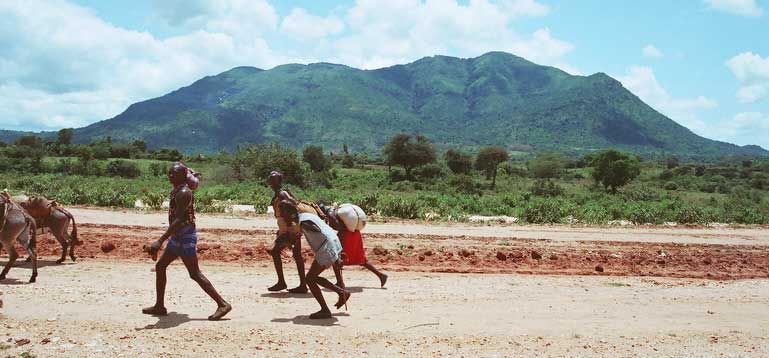
Tribals hiking from their villages to the Monday market at Kako.
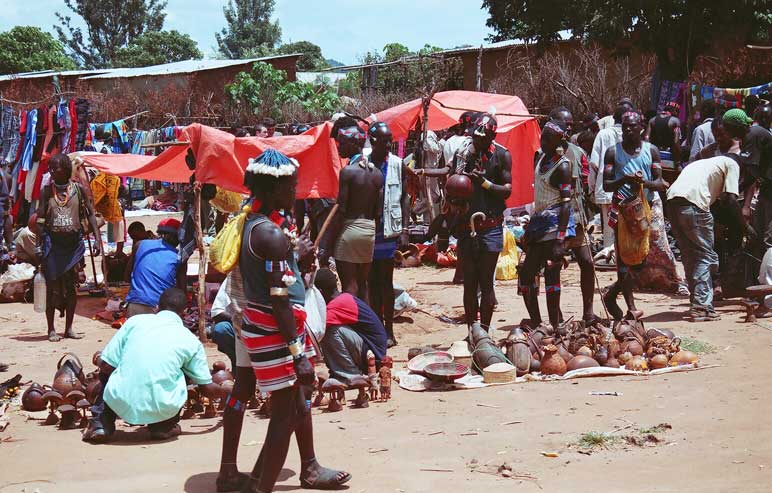
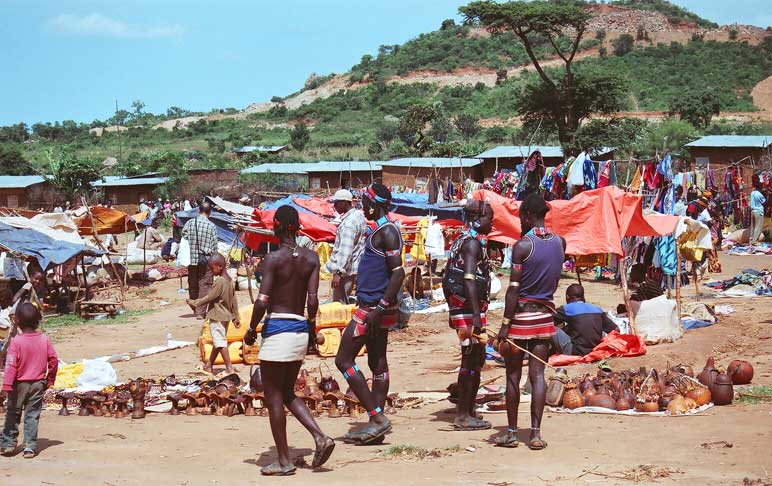
Hamer tribals at the Thursday market of Key Afer, very much spoiled by
tourism to the point where I believe some of the more outlandishly
painted young ones are only doing so for picture money.
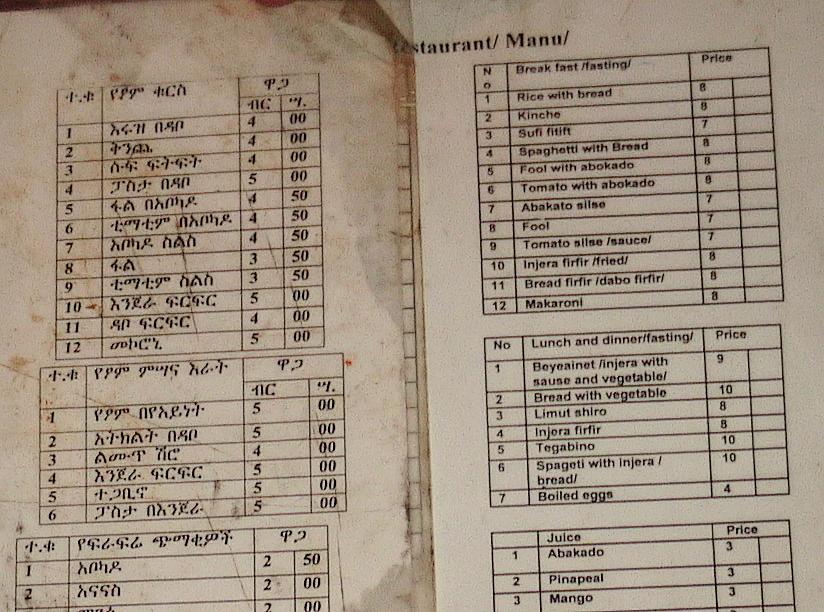
This was our rude introduction to dual pricing in Jinka,
Ethiopia. The same menu in Amharic (left) and in English (right)
is differentially priced by up to two fold! We had great
difficulty finding merchants who would sell us food at habisha
(Ethiopian) prices. Most would rather make no money at all than
to accept local prices from foreigners, and this institutionalized
racism had very profound roots as I got to learn over the course of a
month in the country. Ethiopia is truly a unique culture, mixed
from African and Arab elements, with semitic origins and a unique
religion (Ethiopian orthodox church) and culture, a historical sense of
destiny (spared from the arab armies by the Prophet Muhammed's own
decree, and successfully resisted the feeble Italian colonial armies),
geographic isolation in the mountains, and finally nurtured by the
isolationist nationalistic marxist rule of the Derg in the 1970s and
80s. What has resulted is a transformation from healthy pride to
a noxious form of cultural arrogance and racial supremacy that can be
hard to take for many visitors (and even minority locals). Yes,
many Orthodox Ethiopians really do believe it when their priests tell
them that the habisha are the chosen race, created using God's finest
materials while other races had to be cobbled together with the
leftovers. Anyway it is a part of the Ethiopian experience
and part of what makes this such an interesting and worthwhile country
to visit. Ethiopia should definitely not be lumped into broad
African cultural categories such as Bantu, Arab, and Sahel .
TO CENTRAL AND
EASTERN ETHIOPIA
TO NORTHERN
ETHIOPIA








